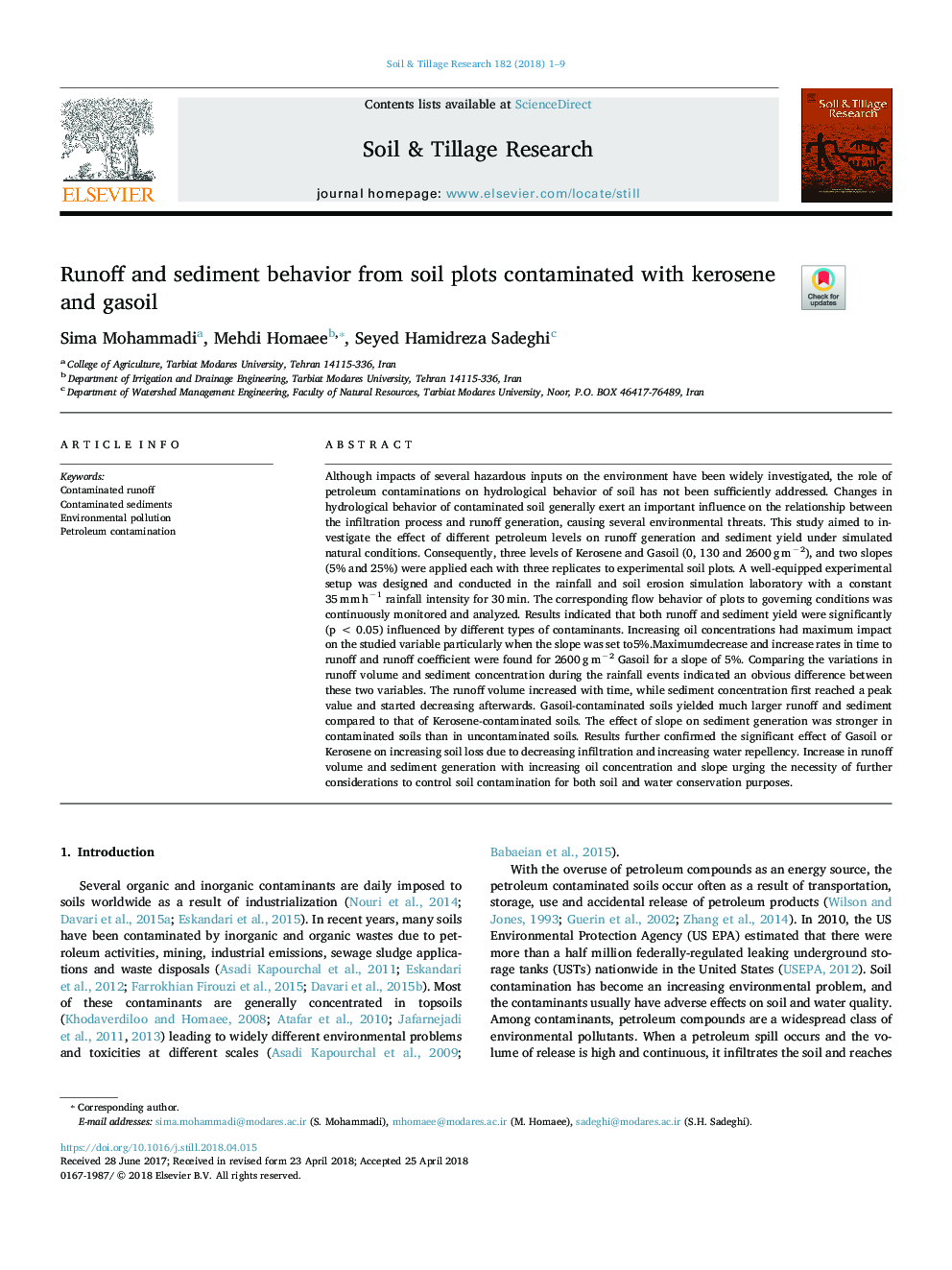| Article ID | Journal | Published Year | Pages | File Type |
|---|---|---|---|---|
| 6772951 | Soil and Tillage Research | 2018 | 9 Pages |
Abstract
Although impacts of several hazardous inputs on the environment have been widely investigated, the role of petroleum contaminations on hydrological behavior of soil has not been sufficiently addressed. Changes in hydrological behavior of contaminated soil generally exert an important influence on the relationship between the infiltration process and runoff generation, causing several environmental threats. This study aimed to investigate the effect of different petroleum levels on runoff generation and sediment yield under simulated natural conditions. Consequently, three levels of Kerosene and Gasoil (0, 130 and 2600â¯gâ¯mâ2), and two slopes (5% and 25%) were applied each with three replicates to experimental soil plots. A well-equipped experimental setup was designed and conducted in the rainfall and soil erosion simulation laboratory with a constant 35â¯mmâ¯hâ1 rainfall intensity for 30â¯min. The corresponding flow behavior of plots to governing conditions was continuously monitored and analyzed. Results indicated that both runoff and sediment yield were significantly (pâ¯<â¯0.05) influenced by different types of contaminants. Increasing oil concentrations had maximum impact on the studied variable particularly when the slope was set to5%.Maximumdecrease and increase rates in time to runoff and runoff coefficient were found for 2600â¯gâ¯mâ2 Gasoil for a slope of 5%. Comparing the variations in runoff volume and sediment concentration during the rainfall events indicated an obvious difference between these two variables. The runoff volume increased with time, while sediment concentration first reached a peak value and started decreasing afterwards. Gasoil-contaminated soils yielded much larger runoff and sediment compared to that of Kerosene-contaminated soils. The effect of slope on sediment generation was stronger in contaminated soils than in uncontaminated soils. Results further confirmed the significant effect of Gasoil or Kerosene on increasing soil loss due to decreasing infiltration and increasing water repellency. Increase in runoff volume and sediment generation with increasing oil concentration and slope urging the necessity of further considerations to control soil contamination for both soil and water conservation purposes.
Related Topics
Physical Sciences and Engineering
Energy
Renewable Energy, Sustainability and the Environment
Authors
Sima Mohammadi, Mehdi Homaee, Seyed Hamidreza Sadeghi,
